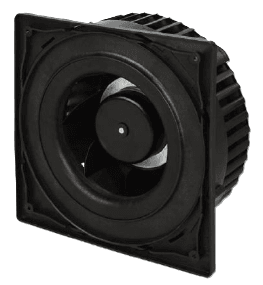Fandis – represented by Rotero – launched ‘Sensis’ at the SPS Italy. The Sensis is a compact instrument which measures the temperature and relative humidity in control boxes. This allows the operator to track thermal and climate conditions which are indicators of the ventilation and/or heating system’s performance. These values can be viewed on a clear display and can be sent and saved for further analysis via ProfiNet, Modbus RTU or Ethernet/IP.

Operations are the often the heart of a machine. This is definitely the case when they have been integrated into an automated environment. One of the key factors for optimal performance is climate – this is determined by the temperature and relative humidity – in the corresponding control box. Electronics can be seriously damaged and the safety and efficiency of the machinery can be compromised if the ventilator or heating system fail and the maximum and minimum temperature settings are not met or are exceeded.
Monitoring the temperature and relative humidity in the control box can help to prevent any disruptions and unplanned downtime. This can now be done using the Sensis: an intelligent instrument for interactive climate management in control boxes.
Assembly
Sensis is based on ARM microcontroller architecture which can monitor and track climate conditions. In other words, it is a digital thermostat/hygrostat with programmable minimum and maximum values; the exact specifications depend on system’s demands.
The compact device, which can easily replace the thermostat in existing units, can be connected to a 24 VDC power supply and has been equipped with two internal sensors which measure temperature and relative humidity respectively. An additional two sensors can be connected in random (critical) locations within the control box. Furthermore, it provides a digital entrance for a limit switch which will detect if and when the door to the control box is opened and closed as well as two relay exits.
The graphic HMI allows the user to monitor the most important values in real-time and to create setpoints.
Communication
A number of different models have been created which allow data to be transferred by means of a simple RS485 interface or by means standard fieldbuses like Profinet, Modbus RTI or Ethernet/IP. The PLC can be ‘bypassed’ by using OPC-UA or MQTT on the same physical channel.
Monitoring the temperature and relative humidity at set times, comparing them to the preset values, communicating this data and saving it means you can:
- Intervene in a timely fashion if one of the values exceeds or falls below the preset value. An alarm is automatically issued by email if the instrument has been integrated into a network. The ‘event monitor’ also stores this data as well as the date and time of the incident for further analysis.
- Improve ‘predictive maintenance’.
- The data generated and stored can be used for analysis purposes to help determine the system’s efficiency and/or its operation. This includes things like the registration of peak values, exceeding or failing to meet parameters, registering when the door to the control box is opened or closed (when this happened and for how long) etc. This information can be used to optimise the control box and its use.
- To help determine the efficiency of the heating and ventilation systems by combining the temperature and humidity levels registered with the ambient values.
Would you like more information about these products? Contact us directly using the contact form, or call: +31 (0)348 495 173 (NL) of +32 (0)15 451 840 (BE). We would be pleased to help you to find the best solution!





